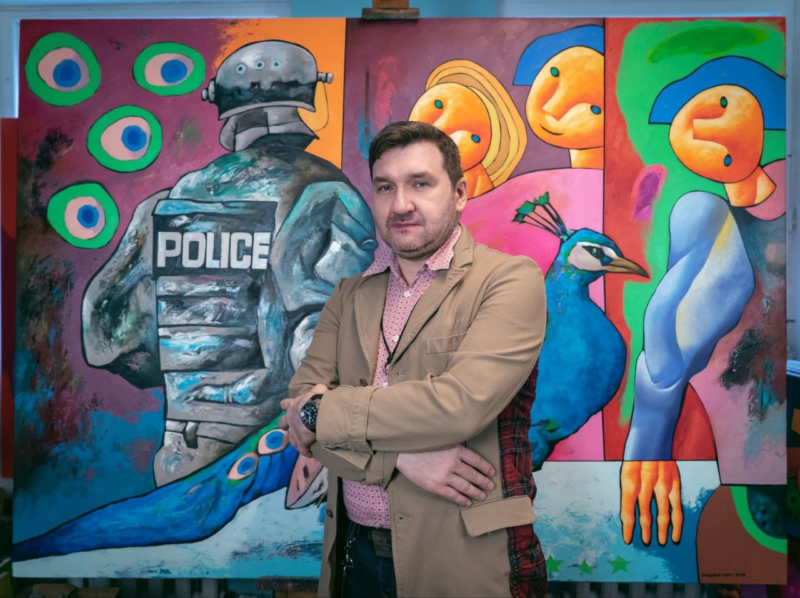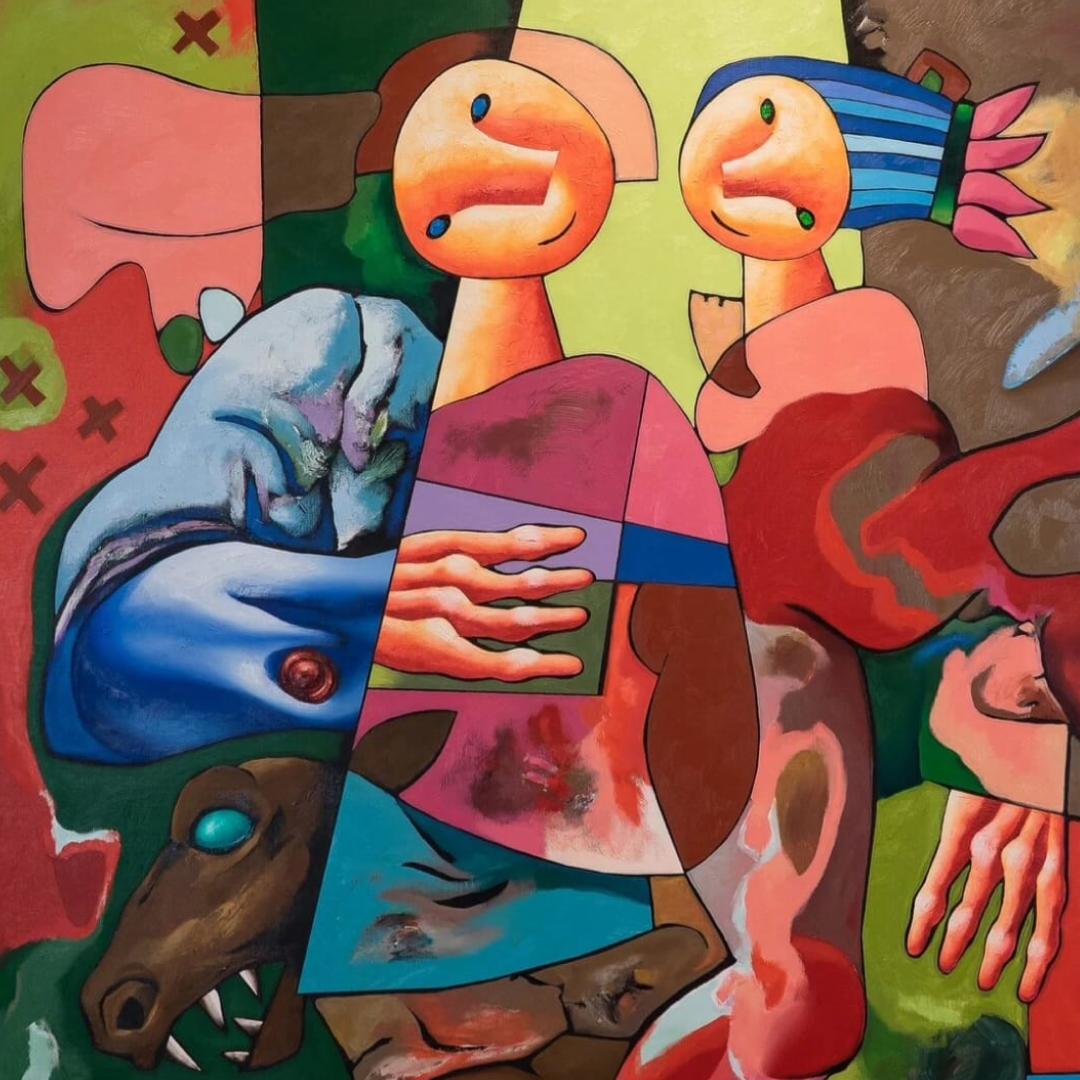Dmitri Strizhov is a Russian-American semi-abstract artist, interior designer, poet, writer, and producer. Since 1990, he has held over 40 exhibitions of his paintings in galleries worldwide. Many of his works are featured in museum collections in Germany, America, Russia, and other countries, as well as in private collections.
Fine Art Shippers spoke with Dmitri Strizhov about developing his own visual language, his creative process, and the connection between art and architecture.
Artist Talk: Dmitri Strizhov on Developing a Unique Style
Let’s start from the beginning—why did you choose painting over other things in life?
Dmitri Strizhov: I was best at drawing and painting and enjoyed it the most, so by the age of six, I already knew I wanted to be an artist. I never really considered any other options.
When you started working professionally as an artist, how did you develop the style you eventually focused on?
My academic studies allowed me to train my hand and eye, but that was just learning the craft. The most gratifying moment came when I developed my own style. I began to stylize, moving away from traditional techniques and simplifying objects and figures.
Can you tell us a little about your influences?
If anyone influenced me, it was only a handful. Firstly, very few artists could bring color to such an extreme point, which has always interested me. Other artists around me rarely addressed the challenges I set for myself.
However, when I arrived in New York and explored SoHo with its thousands of galleries filled with high-level contemporary art, it definitely had an impact. It opened new perspectives for me. My paintings are what I call eclectic. They combine academic techniques with methods I developed myself, making them immediately recognizable.
What goal did you set for yourself as an artist?
I aimed to create aesthetically pleasing, one-of-a-kind works of art without replicating the world around me. Immediately after art school, I abandoned all academic standards and constraints, allowing myself to experiment. My paintings are governed by the principles of aesthetics, composition, and color—the fundamental elements that make a work of art genuine and independent of any specific narrative.

So, what is your technique? How do you use it?
My technique involves combining multiple methods on a single canvas, resulting in an intricate art piece. I employ multilayering and numerous glazes, ranging from 5 to 40 layers. This depth gives the paintings their resonant quality.
Your paintings feature some human-like characters. Who are they, and how did they come about?
As I mentioned earlier, there was a moment when I decided to abandon academic techniques. For me, the abstract symbolism of the painting is far more important than its illustrative aspect. I began stylizing my characters in a way that makes them recognizable and suggests the presence of a human without depicting a person realistically. These stylized figures fit into any setting, creating a world of their own.
Could you tell us about your process of working on your paintings? Is it intellectual or intuitive, and how long does it typically take?
Well, the process is very lengthy. An ideal work of art cannot be created instantly. It can take one or two, sometimes even three years. My technique requires each layer to dry before applying the next one. Naturally, this complicates the process because you have to remember where you started and where you're heading, and you must maintain that sense of energy, carrying it through to the end.
You have worked on ballet and theatrical productions as a set designer. What has been your approach?
Usually, I’ve been invited to participate as an established artist with a distinct style. For example, the Vienna Opera approached me specifically because of my visual language. They were not looking for generic sets with houses, balconies, and plastic flowers made to order. They sought something unique, and I hope I delivered that.
Your career has developed both in Russia and the United States. How did you start working with American galleries?
In 1990, I was selected to join the prestigious Albright–Knox Art Gallery, which represented major names like Basquiat, Andy Warhol, David Hockney, Willem de Kooning, and other contemporary and modern artists. Working with this gallery was a unique experience, and through it, my works entered prestigious museums and private collections. 
You are both an artist and an interior designer. What is your take on the connection between art, architecture, and interior design?
The most interesting and unexpected ideas often emerge from visual art. Visual art can set a direction, while architecture enhances it by adding a spatial dimension. Originally, all architects were artists. Consider Le Corbusier, who was an artist before becoming an architect and whose artistic influence shaped an entire movement in architecture. There are many such examples.
As for me, I enjoy combining the expressive language of abstract art with architecture. It allows for unexpected discoveries. Sometimes, I design buildings using formal solutions derived from my artwork.
Lastly, how would you characterize today’s contemporary art industry?
Today, numerous platforms are available for artists, whether galleries, art fairs, or biennales. However, these platforms are often heavily commercialized, causing artists to focus on fitting in, pleasing the audience, and getting noticed by galleries, rather than pursuing their creativity. Despite the constant activity, few truly unique and brilliant artists emerge. Much of what appears is derivative or repetitive, which is precisely what I strive to avoid.
Interview by Inna Logunova Photo courtesy of Dmitri Strizhov
